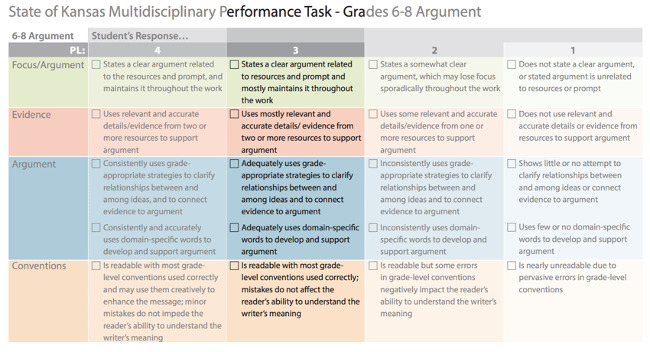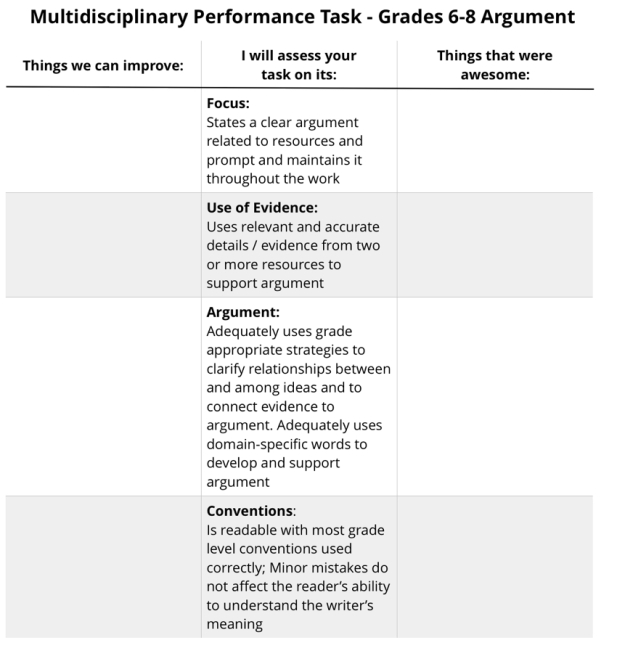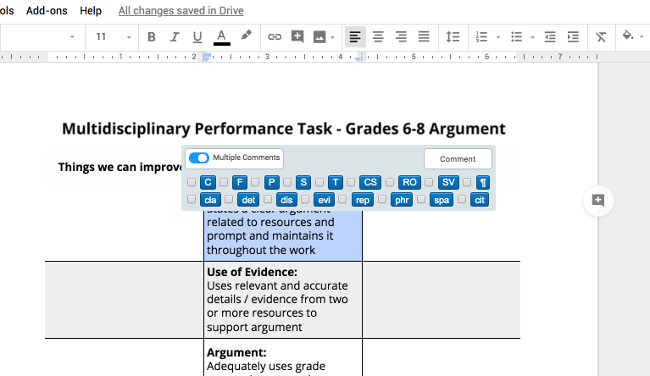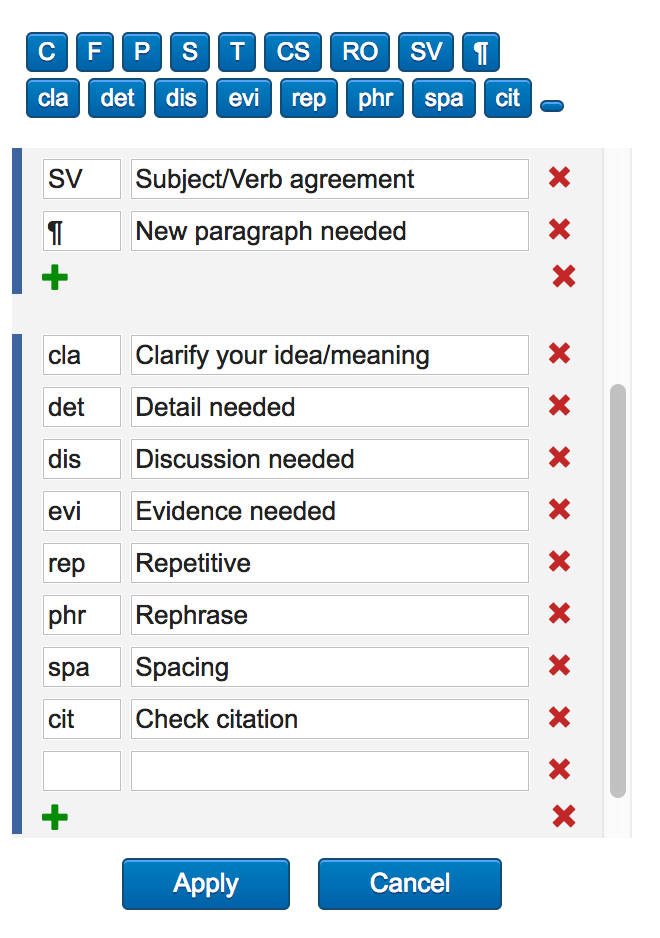Single-Point Rubrics and Checkmark Make Your Life Easier & Your Kids Smarter
You just finished putting together a great instructional lesson or unit. Then you realize . . . you haven’t created the rubric yet.
We’ve all been there. You just finished putting together a great instructional lesson or unit. Kids are gonna love it. They’re working together. Doing research. Creating stuff, not just consuming it. The historical thinking will be off the charts.
Then you realize . . . you haven’t created the rubric yet.
You know that clear expectations and feedback are critically important to the learning process. You know that rubrics can help you in assessing what students know and are able to do. So you sit back down and eventually decide to use four scoring columns instead of five. Six rows of criteria instead of three. Clear descriptors. Nine point font all crammed into your matrix so that it fits on one page. Definitely tons of feedback gonna happen from this beauty.
But it’s worth it, right?
Mmm . . . using a great rubric can speed up the grading and assessment process but they can also create other issues besides the amount of time it takes to create them. A student shows creativity way beyond what the rubric asks for in a way that you hadn’t anticipated and your columns and rows aren’t able to reward that. Or a kid spells everything correctly but the grammar and punctuation is terrible. Maybe she nails the document analysis but fails to use evidence in her claims and your rubric has those two things together.
And is there any way – other than individual conferences – to really know whether students actually go deeper into your scored rubric than to look at the final grade circled in the bottom left hand corner?
Yes, analytic rubrics are useful. I’m not saying rubrics shouldn’t be part of your assessment toolkit. They can help you develop and create assignments that are aligned to your end in mind. They can provide clear expectations for students and a way to share feedback. But they can also be difficult to design correctlyand may seem so overwhelming to students that the expected feedback we want never really sinks in.
Tools and ideas to transform education. Sign up below.
And, sure, holistic versions are much quicker to create and use. So that’s nice. But they fail to provide specific and targeted feedback. You get a kid who wants to know why they got a two instead of a three or worse, he won’t ask at all. Missing the whole point of providing feedback in the first place.
So . . . why not look at a third way to the rubric game? And use some tech to make it even better?
This third way, called a single-point rubric, is a lot like an analytic rubric listing the different required component parts of an assignment. Like the KSDE version below, you would still have Focus, Evidence, Argument, and Conventions as rows. But instead of four columns of four, three, two, and one across the top, you have just three columns.

And here’s the kicker, only the middle column actually contains descriptors. Essentially, the single-point rubric simply describes what successful work looks like using the criteria for proficiency. One of the remaining columns is used to highlight things in the student work that are amazing and go beyond proficient. The other can be used to highlight ways to improve the work.
Let’s use the KSDE historical argument rubric as an example. Nothing wrong with the rubric, especially since someone else created it for us. But it can still have some of the baggage that all analytic rubrics carry with them.
So we take the second column, the Three column, and isolate it.

Using these descriptors, we can create our single-point rubric:

This is basically copy and paste to show a quick sample. So you might want to tweak the Focus section or clarify more what grade appropriate strategies looks like in the Argument section. The idea is to make your life easier and student work better. So a single-point rubric doesn’t try to anticipate ways that a kid might exceed our expectations. It doesn’t try to describe ways that a kid failed. It just says . . . here ya go, this is what I want – leaving lots of room for student creativity and expression. It also allows you to be specific about ways student work can improve.
Quick review – why use a single-point rubric?
- Simple to create
- Clear, specific, higher quality, and individualized feedback
- Focus is on feedback and improvement, not just a grade. (Great if you’re moving to standards-based assessments or away from traditional grading.)
- Allows for flexibility in teacher feedback without losing clear expectations
- Supports student performance and creativity beyond proficient
- Encourages students to actually read and internalize our feedback
Need some research-based evidence? Feel free to head over to this 2010 research project by Jarene Fluckiger highlighting rationale, impact, usage, and examples. And Jennifer Gonzalez has two nice articles here and here.
But. I can hear the buts.
I like the idea but doesn’t using a single-point rubric mean I have to write more feedback? Instead of just circling cells on a rubric?
Perhaps. But . . . it’s more specific and more impactful than circling cells on a rubric. And with the Google Interwebs, there’s a quick and relatively painless way to make providing feedback a bit easier.
You’ll need to be using the Google Chrome browser and Google Docs for this to work – most of you are doing that already. First thing? Go to the Google Web Store and install the Chrome browser extension called Checkmark.
Once installed, Checkmark makes leaving comments on Google Docs super easy. Highlighting any text in a Google Doc opens a simple popup window that has a list of generic comments that every teacher might make on a student work. Spelling, grammar, repetitive language, passive voice, needs more evidence. Simple check the boxes with the comments you want to leave and Checkmark will insert those along the right hand side of the document.

The beauty of Checkmark is that you can create specific comment menus and add specific criteria to each menu.

Using Google Classroom would make this even easier. Paste in your rubric into the assignment, share it with students via Classroom. When kids submit their work, you have the option to use Checkmark both on the rubric and throughout the work is you want.
No. Checkmark won’t work for every comment you’ll need, (one of the selling points of a single-point rubric is to deliver student specific feedback) you’re going to have to actually type some stuff in now and again. But Checkmark will help with the basics, giving you more time to do that.
And isn’t that the idea? So give single-point rubrics a try. Together with Checkmark, your kids are gonna walk away smarter.
cross posted at glennwiebe.org
Glenn Wiebe is an education and technology consultant with 15 years' experience teaching history and social studies. He is a curriculum consultant forESSDACK, an educational service center in Hutchinson, Kansas, blogs frequently at History Tech and maintains Social Studies Central, a repository of resources targeted at K-12 educators. Visit glennwiebe.org to learn more about his speaking and presentation on education technology, innovative instruction and social studies.
